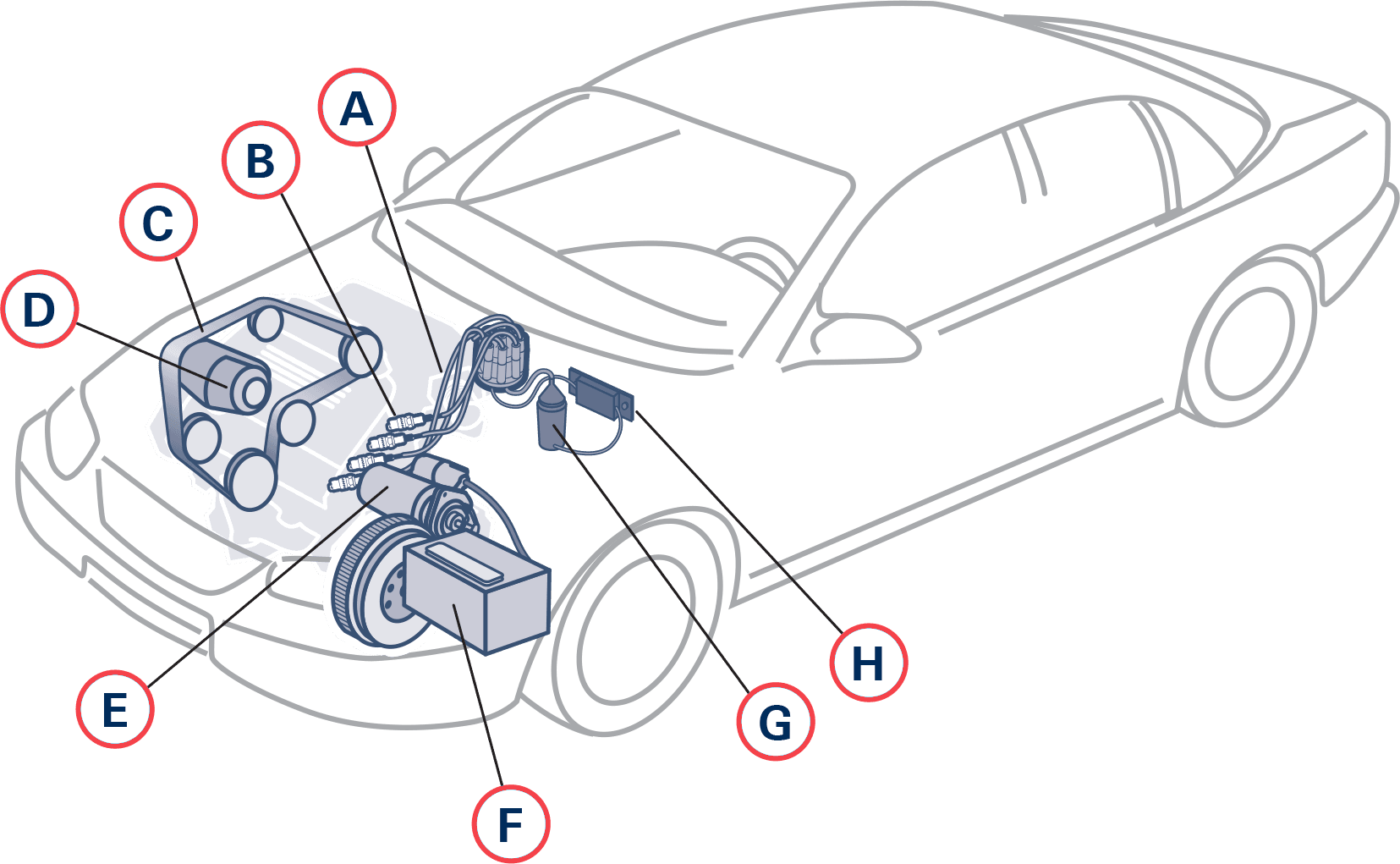Starting and Charging Check
only $30.00
Book AppointmentYour car’s electrical system consists of the battery, starter and alternator. The battery provides juice to the starter. Then, the alternator gives that battery the energy it needs to power your car. Your car’s starting and charging systems and battery help ensure dependable vehicle operation. Make sure to have these systems checked regularly.

 Spark Plug Wires
Spark Plug Wires
Request Quote
The spark plug wire has a seemingly simple job: Carry the high-voltage electricity produced by the ignition coil to the terminal of the spark plug. Once at the plug, the electricity travels to the other end of the plug, and jumps a gap between electrodes to produce the "spark" that ignites the fuel mixture.
 Spark Plugs
Spark Plugs
Request Quote
An internal combustion engine requires three key ingredients to operate: air, fuel and spark. A spark plug is a critical engine component that provides the spark that ignites the air-fuel mixture that drives an engine.
A spark plug operates by directing electrical current to flow through a centre electrode, forming a spark across an electrode (or air) gap, completing the circuit to a ground electrode. The centre electrode is surrounded by a ceramic insulator which is non-conductive preventing current leakage and ensuring electricity flows in the desired direction.
 Belt
Belt
Request Quote
A serpentine belt is a single, continuous belt used to power multiple devices in your engine. These include the alternator, power steering pump, water pump, A/C compressor and air pump. If your serpentine belt breaks it will cause numerous components in your vehicle to stop working and lead to costly repairs.
 Alternator
Alternator
Request Quote
An alternator is a generator of electric power in you car and is a major component of your vehicle's charging system. Whenever your engine is running, the alternator charges your battery and supplies additional electric power for the vehicle's electrical systems. An alternator is attached to the engine and is driven by a drive belt.
 Starter
Starter
Request Quote
The starter motor on your car is responsible for turning the engine over initially, and starting the process of pulling air into the engine for combustion. The starter extends a rod with a pinion gear attached, which connects with the flywheel or flex plate on the crankshaft. When the starter turns, the engine turns over.
 Battery
Battery
Request Quote
The battery in your vehicle performs many functions. The most obvious is to provide electrical energy to crank the starter and get the engine running. It must also provide energy to the lights, heater, radio, air conditioning and other electronics. Your battery has the ability to last several years because your vehicle’s alternator works to replenish it with electric current. However, over time the battery will lose its ability to store and hold an electrical charge, making it difficult to start your vehicle.
 Ignition Coil
Ignition Coil
Request Quote
The ignition coil is the unit that takes your relatively weak battery power and turns it into a spark powerful enough to ignite fuel vapor. Inside a a traditional ignition coil are two coils of wire on top of each other. These coils are called windings. One winding is called the primary winding, the other is the secondary. The primary winding gets the juice together to make a spark and the secondary sends it out the door to the distributor.
 Ignition Module
Ignition Module
Request Quote
An ignition control module is a computer that controls the ignition coil or the ignition coil's firing time. The ignition control module is the heart of an automobile's ignition system. It regulates spark generation within the engine. The ignition control module relies on the car battery to provide the 'spark' that sets the ignition system in motion. The ignition control module is normally located inside or near the car's distributor and is usually coated with insulating compounds to protect its internal electronic components.

